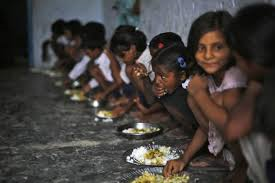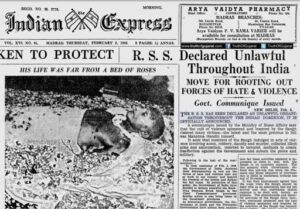S.V. Narayanan
Constitution day on November 26, similar to other days of national importance, has become another day of ritualistic celebration without much critical introspection.
The significance of constitution day is not in the explicit ritualistic reverence to the supreme legal document, but in critical introspection of our progress in fulfilling the basic ideology of our constitution. The constitution makers’ clarity of thought in creating a just society is clearly reflected in the founding philosophy of our constitution.
The Constituent-Assembly debates show the commitment of its members in giving life to the idea of India in an inclusive manner based on the principles of social justice and democracy. The unique nature of Indian nationalism, as highlighted by historian Ramachandra Guha, is not based on any single religion or language, as in European counterparts. That shows the inclusive nature of Indian nationalism overcoming the conflicting social identities to create a political citizenship for the overall development of the nation. The constitution and its ideology have laid a strong foundation for such an inclusive nation respecting the differences and strengthening social justice in the newly independent nation.
Ideology of the Indian constitution
Ideology could be defined as a set of ideals or beliefs, which forms the basis of the economic or political system. Ideological beliefs not only give hope for a better society, but also recognise/accept the existing inequalities in society for its people to introspect about their progress in the future.
Even though our constitution is a lengthy document, its ideology is well entrenched in its preamble, revealing the nature of the newly independent nation. The ideology in the preamble not only declares our freedom, but lays a strong foundation for a society based on equality, justice and liberty. The Objective Resolution moved by Jawaharlal Nehru in 1946, which was adopted by the Constituent Assembly in 1947, is almost reflected in the preamble of the Indian constitution. It clearly lays down the path to be taken by the future Indian state to create a strong, united and inclusive country, eliminating all forms of discrimination.
The principles of justice, equality and liberty, along with secularism, form the core components of the ideology of the Indian Constitution. The founding fathers of our constitution envisaged an egalitarian society based on such ideal principles, but does our contemporary reality really reflect these values?
Reality check
The founding principles of our constitutional ideology are mutually interdependent, making it indivisible and inalienable rights of every citizen. Justice—social, economic and political—lays the foundation for other principles of equality and liberty to be realised in an effective manner. Justice not only gives equal opportunities but also means positively treating unequals in an unequal manner to create equality. This basic social liberal ideology laid a strong foundation for all positive discrimination intervention by the government. The protection of individual rights along with social justice can be understood clearly from the preamble of constitution.
Inequality
Persistent and increasing inequality in a society shows that the principle of economic justice failed to realise its objectives. Further, the denial of economic justice extends its influence in denying justice in the political and social domain as we witness in our contemporary India.
According to Thomas Piketty and Lucas Chancel in their research paper titled ‘Indian income inequality, 1922–2014: From British Raj to Billionaire Raj?’ income inequality is at its highest in the last 100 years in India. The top 1% had around 21% of total income in 1930s, which reduced to 6% in 1980s and again reached 22% by 2014—reaching the highest level. The period after the 1980s, when we starting adopting a neoliberal political economy (officially in 1991), the income share of the bottom 50% reduced considerably and the top 1% increased consequently.
Further, according to Anand and Thampi, in ‘Recent trends in Wealth Inequality in India’, the top 1% of India had 28% of the country’s wealth by 2012, which was an increase of 11 percentage points since 1991. The same period saw the decline of the share of the bottom 40% from 5% to less than 4%.
The Report on Fifth Annual Employment-Unemployment Survey (2015–16) by the Ministry of Labour and Employment, showed that at the all-India level, around 77% of households did not have a single regular/salaried person. More than 67% of households had an average monthly earning that did not exceed Rs 10,000. Within the labour force, more than 71% were not eligible for any social security benefits. Only 1.8% of labour force in India earned more than Rs 50,000 a month and 0.2% earned more than Rs 1,00,000 a month. This data shows the vulnerability and inequality among the working population of India.
Global Hunger Index
India occupied the 100th position in the Global Hunger Index (GHI) 2017, out of 119 countries. In Asia, only Afghanistan and Pakistan are behind us. The report further stated:
“At 31.4, India’s 2017 GHI score is at the high end of the ‘serious’ category, and is one of the main factors pushing South Asia to the category of worst performing region on the GHI this year, followed closely by Africa South of the Sahara.”
The shocking aspect of the hunger index is that we were at the 55th position in 2014 and now we are at the 100th position within three years. The worrying aspect is that the totalitarian regime of North Korea and war-ravaged Iraq are ahead of India in the index. The high malnutrition level among children, women and other vulnerable groups contribute towards our declining position in the GHI. This further shows how economic and social justice is being denied to a majority of the population, violating the basic ideology of our constitution.
Discrimination against minorities
The Sachar Committee report (2006) on the social, economic and educational status of the Muslim community in India revealed the institutional discrimination Muslims face in India. The literacy rate of Muslims was far below the national average and only one out of 25 in undergraduate and one out of 50 in postgraduate courses in ‘premier colleges’ were found to be Muslim. Muslim representation in Civil Services was around only 3%. Muslim children are in greater risk of being underweight or stunted compared to other communities.
Banks in Muslim areas are marked as ‘negative’ or ‘red’ zones indicating that giving loans is not advisable—limiting their institutional support. Poverty among Muslims is high and even basic facilities like post offices were not operational in Muslim areas. Such institutional discrimination has kept the Muslim community vulnerable, causing them to turn to religious support systems.
The professor Amitabh Kundu committee, formed in 2014 to review the implementation of Sachar Committee recommendations, did not find much improvement in the institutional support system for Muslims. This is against the foundational ideology of justice in the Indian constitution.
Privatisation of educational institutions
The constitutional ideology mixing social justice with individual liberties came under threat after we formally adopted the neoliberal political economy in 1991. The state slowly started moving away from positive intervention through the creation of support systems for vulnerable groups. Privatisation of the public sector has excluded the hitherto deprived communities from the benefits of social justice.
Table 1 shows the surge in private institutions of higher learning in India between 2011 and 2017. Since private educational institutions do not follow the system of reservations, a majority of minority, SC/ST and Muslim students are excluded from any meaningful participation, thus defeating the whole ideology of social justice as envisaged in the Constitution.
Table 1: Percentage of Private Institutions of Higher Education – All India
| Year | University | Colleges /Recognised institutes | Stand-alone institutes | All institutions |
| 2011-12 | 29.25 | 72.58 | 78.73 | 60.19 |
| 2012-13 | 31.86 | 73.77 | 76.91 | 60.85 |
| 2013-14 | 33.19 | 74.59 | 75.66 | 61.15 |
| 2014-15 | 35.36 | 76.09 | 75.07 | 62.17 |
| 2015-16 | 36.47 | 76.69 | 75.18 | 62.78 |
| 2016-17 | 38.74 | 76.86 | 74.44 | 63.35 |
Source: All India Survey of Higher Education (AISHE) – 2011 to 2017
Need for course correction
The founding ideology of the constitution, combining liberalism and social justice in the form of social liberalism, is slowly being defeated as we have already deviated from it considerably. The ‘justice’, ‘liberty’ and ‘equality’ in the preamble are slowly losing relevance and have become mere ritualistic words for the ruling class during times of celebrations like constitution day. Critical introspection clearly shows how we have failed miserably to live up to the expectations of our founding fathers. The further weakening of constitutional values is going to threaten the idea of India that evolved from a complex mix of cultures, religions, regions etc, with social justice, secularism, liberty and equality as its core principles.
(S.V. Narayanan is an independent policy analyst.)




